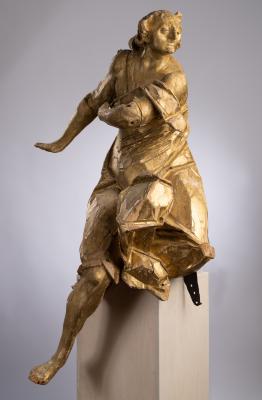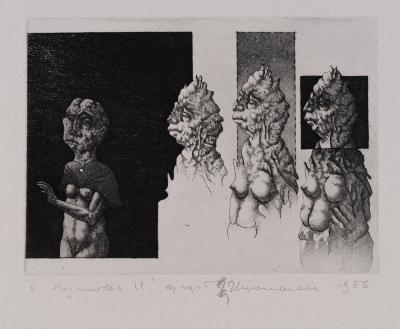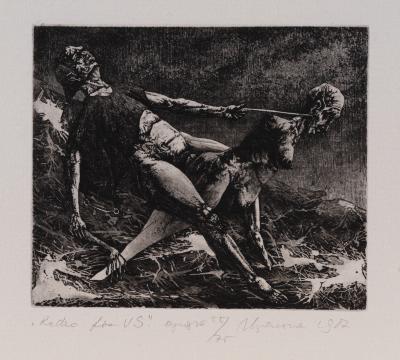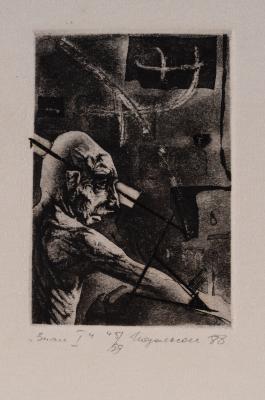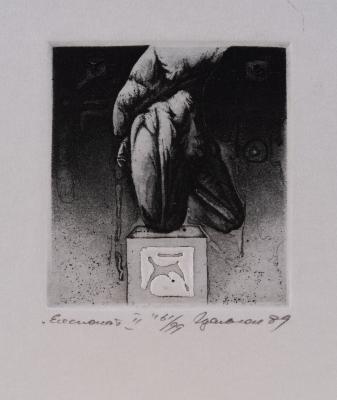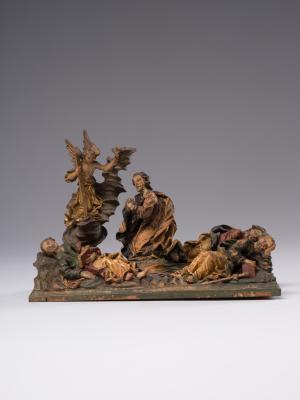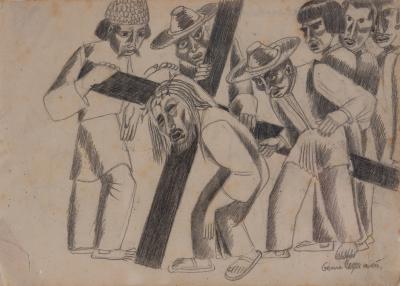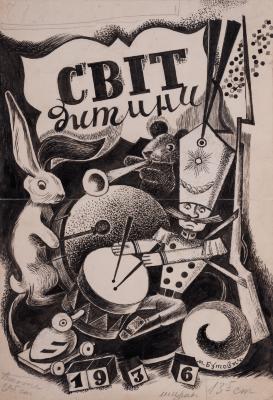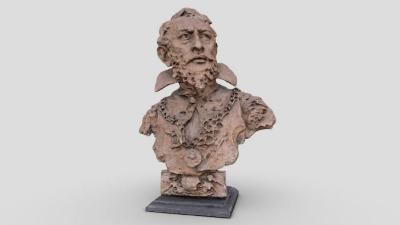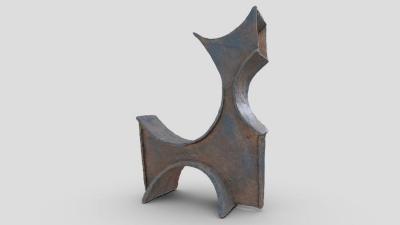A bonze, the abbot of a Buddhist temple, is depicted in profile, on his knees with a turn to the left. His head is shaved. He is wearing a long-sleeved shirt with its hem tied at the back and short pants getting narrow to the knees. He is wearing woollen knee pads on his knees. A red board with straps is tied to the man's back. On the board are four hieroglyphs written in black paint – the name of the monastery he belongs to. The man is holding a pear-shaped wooden vessel with a lengthwise opening in his left hand. He strikes the vessel with a wooden stick, attracting the attention of passers-by. The etching comes from the album "Chinese Customs and National Costumes", which includes 60 images of Chinese people engaged in various activities. An explanation in German accompanies each image; some are written in French. In the eighteenth century, artists in Canton (Guangzhou) in southern China created such paintings for Europeans seeking to learn more about China and its people.






